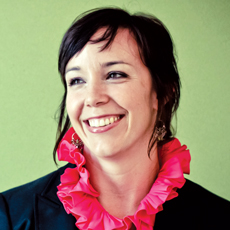
Ninety years young and facing a crossroads
In 2010, The Evangelical Lutheran Good Samaritan Society took a bold step to move the organization forward by using innovation to achieve its strategy of “leading the way in supporting well-being… at your place or ours.” The Good Samaritan Society has taken many steps in its 91-year history to advance from its beginnings as a six-room rented house in rural North Dakota to become the nation’s largest not-for-profit provider of senior care and services, but this step was radically different. It required the organization to admit the skills that made it successful at fulfilling promises to existing customers may not be adequate to serve the next generation of seniors. The Society saw the traditional field of elder care would need modern solutions and the organization would need to operate a bit like a startup – reacting quickly to changing needs in order to fulfill the mission of “sharing God’s love in word and deed.”
The path chosen and where it led
Over the past two years, The Good Samaritan Society developed “VIVO: Innovation for Well-Being,” a hub for innovative methods, tools and projects. The small Vivo team helps the organization think and act like a startup. It encourages employees to challenge themselves and stretch their imaginations and comfort zones, in an effort “to create new products and services that solve difficult problems and gaps in the well-being of the people they serve.”
One example of a Vivo-driven project involves a team collaborating with regional staff in Kansas to design a new service that assists with post-acute discharge. The project is based on strong ethnographic-based research performed in hospitals with social workers, patients, families and hospital administrators. Like a startup, the team uses assumption testing, similar to a scientist in a lab, as the basis for determining whether a service meets customer needs more effectively.
Another Vivo team is conducting an in-market experiment using technology to help elders stay in their homes longer while also easing the burden of the family caregiver. Much like a technology-based startup, the group is challenged to stay focused on the customers’ needs and not just the cool features of the technology – which is easier said than done!
No one said this path wouldn’t have pot-holes
Organizations beginning innovation initiatives often have a few common questions: Where should the initiative be housed? How do we host brainstorming sessions? How do we even begin launching initial projects? In addition to these questions, The Good Samaritan Society also faced several common challenges. With a customer base consisting of more than 27,000 people, the Society already had its hands full with day-to-day operations and was successful at meeting the current needs of seniors. However, as is true for any venture, organizations continually need to find ways to improve in order to thrive. The Good Samaritan Society was committed to providing the best services possible for its customers, despite the hurdle of trying something new in order to stay current.
Do you have the three “Ps?”
Once the Society decided to make innovation a priority, it had to take the first step to ensure their “three Ps” were covered:
Passion – The organization’s strong mission drove the courage, passion and optimism necessary for innovation. Its vision to create an environment where people are loved, valued and at peace was critical in to helping it take the leap into the unknown territory of innovation. The Good Samaritan Society took a leap for those it serves; other organizations must find their own passion to meet this critical component.
Permission – The strong executive leadership team at The Good Samaritan Society created the space and resources necessary for innovation. This was no small feat and required dedicated leaders at both the national campus and across the regions it serves. Individuals and teams need permission to use a different set of tools (e.g.. co-creation, ethnographic research and in-market experiments) and a different measurement for progress (i.e., the unit of measurement is learning). According to Silicon Valley serial-entrepreneur Steve Blank, a startup is simply a temporary organization formed to search for a repeatable and scalable business model. To that end, the Society permits its innovation teams to explore new business models and services by using new tools and by getting out in the field to speak with and observe seniors and their families.
Protocol – While The Good Samaritan Society knew the current analytical thinking and tools used to deliver service to existing customers would change with a new generation of seniors, it needed support to learn how to use those new innovation tools. Recognizing that design thinking is the problem-solving tool best optimized for innovation, the Society partnered with Peer Insight to embed new capabilities, including mindful learning, co-creation and iteration, into its teams and work.
The road ahead
The Good Samaritan Society was at a crossroads and took the leap to embed innovation and entrepreneurial practices into its 90-years-young organization. The seeds are taking root for new services that will help it lead the way in eldercare – and pave the way for the next 90 years!
Natalie Foley is vice president and chief operating officer of Peer Insight, a Washington, D.C.–based design thinking and strategy firm. Her primary focus is on Strategy and Change Management, where she guides companies through the process of finding solutions to customer-centered problems in complex environments.




